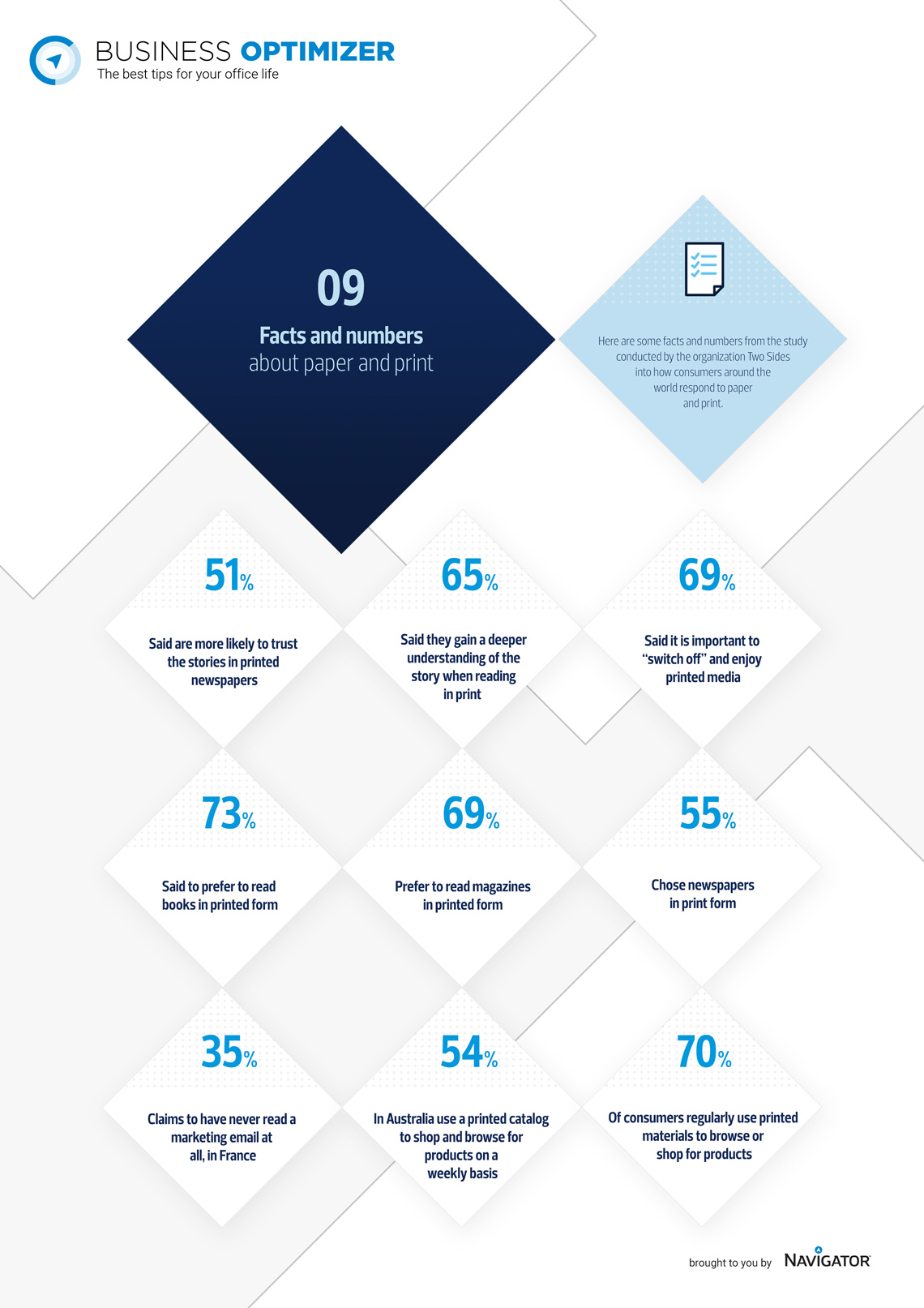Fake news
A large number of respondents (76%) said they are worried about the trend of “fake news”. Respondents said they are more likely to trust the stories in printed newspapers (51%) rather than social media (24%).
Respondents also perceived other advantages to reading in print. 65% of respondents said they gain a deeper understanding of the story when reading in print. And 69% of respondents said it is important to “switch off” and enjoy printed media. This figure was even higher in France, where 79% of respondents prefer to read in print when “switching off”.
Content is king
The type of content being consumed did affect how respondents preferred to consume it. Overall, 73% of respondents prefer to read books in printed form. 69% of respondents prefer to read magazines in printed form. Whereas, generally, respondents were happier to consumer news media in either form; only 55% of respondents said they prefer newspapers in print form.
Marketing communications threw up some surprising responses: 35% of respondents in France claim to never read a marketing email at all! Whereas in Australia, 54% of respondents use a printed catalogue to shop and browse for products on a weekly basis.
Despite these national variations, overall it was clear that effective marketing requires a mix of print and digital communications. Nearly 70% of consumers regularly use printed materials to browse or shop for products, while 85% regularly do so on a digital device.
Concern over digital consumption
Despite this broad acceptance of a mix of media, some consumers expressed a concern about the amount of digital content they are consuming. 52% of global respondents said they spend “too much” in digital devices and 53% worried that overuse of digital devices could be damaging to their health in terms of eyestrain, sleep deprivation and headaches.








